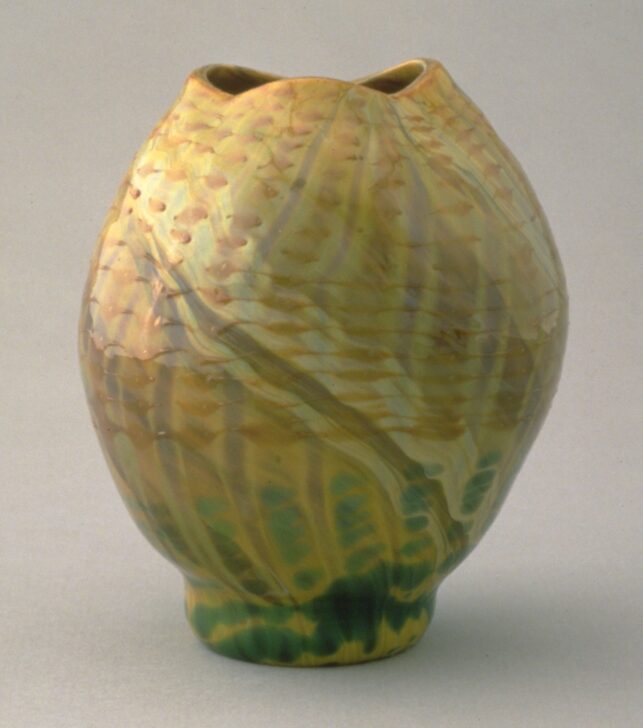Vase
Louis Comfort Tiffany

Description
In conversation with Jennifer Perry Thalheimer, Collections Manager, Charles Hosmer Morse Museum, Rollins College, Winter Park, FL (6/27/06) comes the following information:
The label on the bottom of the vessel FAVRILE T G D CO stands for Tiffany Glass and Decorating Company and was added to glass works created between 1892 and 1900 (although a few were used after 1900).
There is work ongoing about the numbers on paper labels or etched into the bases of Tiffany glass works to establish what they might indicate as to dating, style, inventory, etc.
Subject Matter:
Henry and Lousine Havemeyer were active collectors of the hand-made, iridescent glass made by Louis Comfort Tiffany. Tiffany had been known for making leaded windows since the late 1870s, but only began to make blown-glass vessels in the early 1890s—not long after his work on the Havemeyer house in New York. Tiffany’s term for this opulent glasswork was Favrile (a term derived from the Old English work fabrile, meaning “handmade”); Tiffany obtained a patent for the richly colored and iridescent
Favrile glass in 1894.
Working with Tiffany to select outstanding pieces, the Havemeyers amassed an impressive collection of Tiffany’s Favrile glass; much of it was donated by the family to the Metropolitan Museum of Art. Nearly all of the Tiffany glass in the University of Michigan’s collection was purchased at auction in 1930, along with the architectural fragments, by Emil Lorch, University of Michigan's Dean of the College of Architecture and Design.
Physical Description:
This oval-shaped vase has an irregularly shaped mouth. The decoration, which consists of numerous layers of glass, has green and brown glass in the bottom third; a swriling brown and cream glass the overlays from the foot up to the lip of the vessel, and finally a horizontal pattern of warm brown dots (which are pulled into bands around the widest part of the vessel) that begins at the top.
Usage Rights:
If you are interested in using an image for a publication, please visit https://umma.umich.edu/request-image/ for more information and to fill out the online Image Rights and Reproductions Request Form.